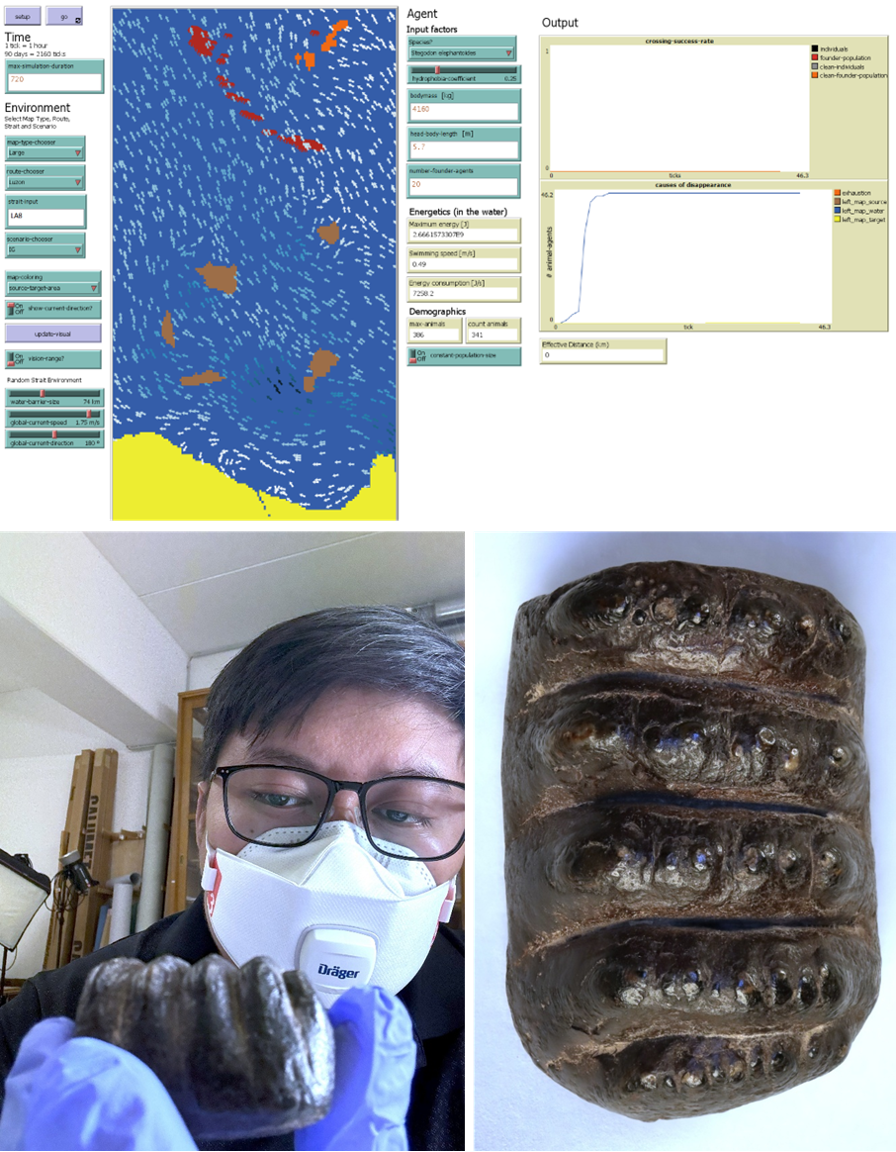Meyrick Tablizo of the Nannoworks Laboratory conducted a research visit to Germany from March 15 to April 27, 2025, to advance ongoing work on the dispersal of Stegodon across insular Southeast Asia during the Pleistocene. The research trip was funded by the Role of Culture in Early Expansions of Humans (ROCEEH) Project (Heidelberg Academy of Sciences) through the international collaboration with Dr. Christine Hertler and the 2025 NIGS Research Grant. It involved the further development of the StegodonSEAcross Agent-Based Model (ABM) at the Senckenberg Research Institute and Natural History Museum in Frankfurt am Main, as well as fossil examination at the Museum für Völkerkunde (Museum of Ethnology) in Dresden.
At Senckenberg, Meyrick focused on improving the SEAcross ABM (v.1.1 https://doi.org/10.5281/zenodo.15607919), which simulates the dispersal of extinct proboscideans (Stegodon and Elephas forms) across the islands and sea straits of Southeast Asia. The model aims to evaluate potential colonization pathways into the Philippines under current (interglacial) and glacial conditions. During the visit, he prepared new environmental layers for the model, including bathymetric DEMs and present-day ocean current data (January), replacing the generalized spatial input used in the earlier model, and integrated using the NetLogo platform.
Meyrick also visited the Museum für Völkerkunde in Dresden on April 17, 2025, as part of his NIGS-funded research entitled “Stegodon mindanensis Naumann, 1890: A Reassessment of the Holotype in Dresden, Germany.” It involved the direct examination and photographic documentation of the holotype of Stegodon mindanensis, a partial Stegodon molar, and another isolated molar ridge, previously identified as S. cf. mindanensis, that were used as talismans by a Manobo tribe in Agusan, Mindanao during the 18th Century. These specimens represent the first formally described vertebrate fossils from the Philippines, published by Heinrich Edmund Naumann in 1887 and officially renamed in 1890. Further taxonomic and morphometric analysis is ongoing.

(Top) SEAcross ABM v. 1.1 NetLogo interface showing the Luzon Strait islands and a Stegodon population (red) attempting to cross from Batan, Sabtang, and Vohas Islands (orange) towards Luzon (yellow). Arrows indicate current direction while the shade corresponds to the current speed (white slower, dark blue faster). (Bottom) Meyrick examining the S. mindanensis holotype in Dresden and a close-up photograph of the specimen.